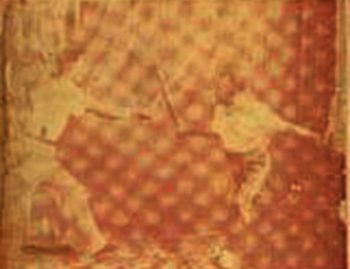Written in archaic Tagalog, “Mga Karunungan sa Larong Arnis” [A Body of Knowledge in the Sport of Arnis] by Placido Yambao and Buenaventura Mirafuente published by the University of the Philippines Press in 1957 is the first definitive book on arnis. This manual became the historical reference of many books and articles on the Filipino Martial arts (FMA) circulated up to the late 1980s.
“Mga Karunungan sa Larong Arnis” exerted profound influence on some practitioners of the FMA. Professor Amante Mariñas of Pananandata admits being greatly influenced by the book. A part of a feature on Mariñas in Mark Wiley’s “Filipino Martial Culture” reads, “An important influence in Mariñas’ study of arnis was his introduction in the 1960s to Placido Yambao’s book, Mga Karunungan sa Larong Arnis.
In fact, Mariñas had already read the book prior to meeting his next arnis instructor Porferio Lanada.” On the specific influence of the book on Mariñas’ style of arnis, Wiley wrote, “Mariñas’ yantok at daga style was greatly influenced by Placido Yambao’s system, which he studied by way of the latter’s book for more than twenty-five years.”
Besides expounding on the technical aspect of arnis Yambao and Mirafuente’s book offers a glimpse on how arnis was practiced in Manila during the 1950s.
One arnis organization constantly mentioned in the book was Kapisanang Dunong at Lakas (Tabak ni Bonifacio, 1946). The name literally translates “Brotherhood of Knowledge and Strength.” It was most probably founded in honor of the Supremo of the Katipunan Andres Bonifacio, (“Tabak ni Bonifacio” means Bonifacio’s Bolo).
Yambao was one of the founders of the organization and its president from 1934 to 1938. In addition to these credentials it was also mentioned that he holds a teaching diploma in arnis awarded by the Magtanggol Sporting Club headed by a certain Joaquin Galang. Mirafuente on the other hand was a one-time president of the committee of teachers of the Kapisanang Dunong at Lakas.
It is evident in the two writers’ accounts that arnis contests were popular in Manila during that time mentioning that stick-fighting bouts were held at the Olympic Coliseum. The Olympic Coliseum mentioned by Yambao and Mirafuente pertains to the Rizal Memorial Sports Complex in Manila then the first multi-purpose stadium in Asia.
Antonio de las Alas, which was the Secretary of Public Works, built it during the 1930s. The structure was to become the site of the 1934 Far East Olympics, 1954 Asian Games and the 1981, 1991 and 2005 Southeast Asian Games.
The two authors didn’t described what type of equipments were used in arnis contests in Manila in the 1950s but considering that escrima death matches was legal until 1948 (the year when Grandmaster Floro Vilabrille fought his last bout), it could be surmised that contact was hard and the protection minimal.
The two authors though gave a detailed description on what type of weapons is to be used in following the instructions in their manual. The mode of arnis practice taught in Yambao and Mirafuente’s book is sword and dagger, called “tabak at balaraw” in Tagalog.
The recommended measurement that they gave is 32-inches for the sword and 12-inches for the dagger. Yambao and Mirafuente emphasized that since the primary goal of the study is just health and fitness, only replicas and not real weapons should be used. The players demonstrating the techniques in the book wear no distinct arnis uniforms only ordinary shirts and trousers as well as high-cut Elpo shoes, the Philippine equivalent of Chuck Taylor shoes in the 1950s.
It is interesting to note that there was already a formal initiative to integrate arnis into the education system during the 1950s. It was mentioned in the book that Mirafuente, with the help of Dr. Marciano Santos, a councilor from Tondo and other concerned individuals filed a formal request to the city government of Manila on April 29, 1954 for arnis to be taught in all high schools in Manila. The authors wrote that the request was approved on August 6, 1954.
The book also mentions Yambao’s interview with Antonio A. Maceda, then superintendent of the City High School of Manila. In the interview, Maceda stressed the need for arnis to be taught in schools and for it to be declared as a national game. Maceda argued that if the Philippines’ native dances were taught in schools then why not arnis?
Besides the addition of arnis to the academic curriculum, he also suggested that it should also be a part of military training. He even cited the examples of Europe and America where galleries of arms were built to preserve the tradition of the art of self-defense.
The teaching of arnis in all the schools of the Philippines is now mandatory because of the enactment of the Arnis Bill (authored by Senator Juan Miguel Zubiri) into a law. It has been a long journey from the time Jose Rizal included arnis into the curriculum he’s teaching to the children of Dapitan until now that it was finally declared the Philippines’ national martial art and sport.
The last remaining copy of “Mga Karunungan sa Larong Arnis” is in the possession of the National Library at Teodoro M. Kalaw St. in Manila.






















